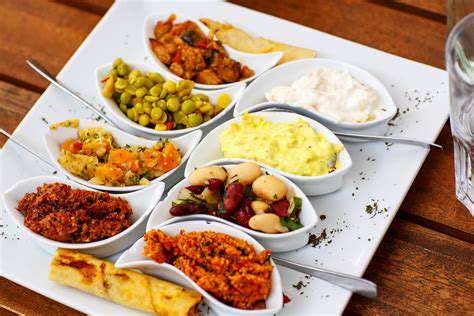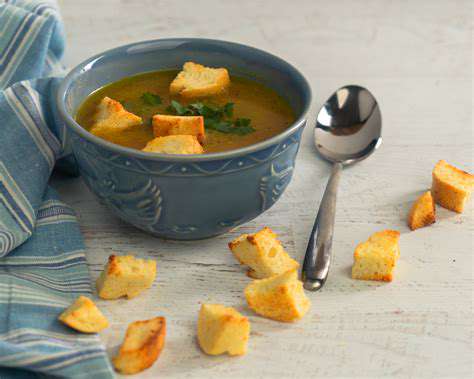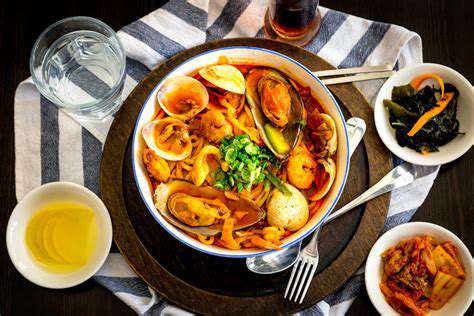Food Culture in Turkey: Kebabs and Turkish Delight
A Culinary Journey Through Time
Walking through the vibrant streets of Istanbul, one can't escape the irresistible aroma of sizzling meats and spices that define Turkish kebabs. These iconic dishes aren't just food - they're edible history. For generations, Turkish families have gathered around shared plates of kebab, creating memories as rich as the flavors themselves. The tradition stretches back to nomadic tribes who first perfected the art of cooking meat over open flames.
The Essence of Flavor: Marinades and Spices
What truly sets Turkish kebabs apart is the alchemy of spices. In small family-run restaurants across Anatolia, chefs guard their spice blends like precious heirlooms. The magic happens when these spices meet quality meats - the paprika adds warmth, cumin brings earthiness, while garlic provides its unmistakable punch. Each bite tells a story of regional identity, with coastal areas favoring brighter citrus notes while inland regions prefer deeper, smokier flavors.
Beyond the Grill: Variations in Preparation
Turkish culinary ingenuity shines in the countless kebab variations. In Adana, they take pride in their fiery minced meat kebabs, kneaded by hand with chili flakes. Meanwhile, in Bursa, the döner kebab rotates slowly on vertical spits, its juices carefully collected for serving. The diversity isn't accidental - it reflects Turkey's geography, with each region adapting the dish to local ingredients and tastes.
A Feast for the Eyes and the Palate
Presentation is paramount in Turkish cuisine. A proper kebab plate arrives like a colorful mosaic - ruby-red tomato slices, emerald parsley, golden bread, and the star attraction: perfectly charred meat glistening with its own juices. The arrangement isn't just pretty; it's designed to engage all senses simultaneously.
The Social Significance of Kebabs
In Turkey, sharing kebab is about more than satisfying hunger. It's a ritual that strengthens bonds. Whether at a wedding feast or casual street-side meal, the act of tearing bread and scooping shared dishes creates connection. This communal aspect explains why kebab shops often become neighborhood institutions, where regulars are greeted by name.
A Global Phenomenon: Kebabs Beyond Turkey
From Berlin to Bangkok, the Turkish kebab has become culinary ambassador. Its global success lies in its adaptability - whether wrapped in flatbread for busy commuters or plated elegantly in fine dining establishments. Yet no matter how far it travels, the soul of the dish remains unmistakably Turkish.
Beyond the Grill: The Art of Turkish Mezze

Beyond the Simple Skewer: Exploring Turkish Culinary Traditions
Turkish cuisine reveals its true depth at the mezze table. These small plates showcase the country's agricultural bounty - plump olives from the Aegean, creamy cheeses from Thrace, and sun-ripened vegetables from the Mediterranean coast. Mezze isn't just food; it's a social experience where conversation flows as freely as the tea.
The Role of Spices and Herbs: A Symphony of Aromatic Delights
Turkish cooks wield spices with the precision of artists. In coastal towns, you'll find dishes brightened with lemon and dill, while southeastern specialties might feature the intense heat of Urfa peppers. The secret lies in balance - no single flavor dominates, creating harmonies that linger on the palate.
Beyond the Plate: The Social Significance of Food
In Turkey, meals are where life happens. The mezze spread becomes a stage for storytelling, debate, and laughter. This tradition of leisurely dining reflects a cultural wisdom - that nourishment involves more than just calories. It's about feeding relationships as much as bodies.
The Sweet Symphony of Turkish Delight

A Culinary Journey Through Turkish Delights
Turkish sweets tell a story of imperial kitchens and Silk Road exchanges. The famous baklava, with its paper-thin layers, demonstrates the Ottoman passion for pastry perfection. Each bite carries centuries of refinement, from palace chefs to neighborhood bakeries.
The Star of the Show: Meats and Kebabs
While sweets dazzle, Turkish meats maintain their crown. In Gaziantep, butchers select lamb with the care of sommeliers choosing wine. The result? Kebabs so tender they seem to melt before reaching your mouth. This reverence for quality ingredients separates true Turkish cuisine from imitations.
The Sweet Side of Turkish Delights
Turkish desserts achieve the impossible - rich yet light, sweet but not cloying. The secret often lies in balancing sugar with citrus or floral waters. These aren't just endings to meals, but celebrations in their own right, often accompanied by strong Turkish coffee.
Muscle tension in the scalp area is often a response to stress and anxiety. When individuals experience high levels of stress, their body can react by tightening muscles, which can lead to a sensation of tightness across the scalp.

Read more about Food Culture in Turkey: Kebabs and Turkish Delight
Hot Recommendations
- Traditional Foods for Day of the Dead
- Food Etiquette in Italy: Pasta Rules!
- Best Family Friendly Restaurants with Play Areas in [City]
- Review: The Best [Specific Dessert] Place in [City]
- Top Ice Cream Parlors in [City]
- Traditional Foods for Halloween
- The History of the Potato in Ireland
- Best Vegan Pizza Joints in [City] [2025]
- Best Bakeries for Sourdough Bread in [City]
- Food Culture in Argentina: Asado and Wine



![Healthy Eating for Toddlers [Tips & Recipes]](/static/images/28/2025-05/FruitandVeggieFun.jpg)



![Top Places for Hot Dogs in [City]](/static/images/28/2025-05/HiddenGemsandLocalFavorites3ADiscoveringtheUnexpected.jpg)



